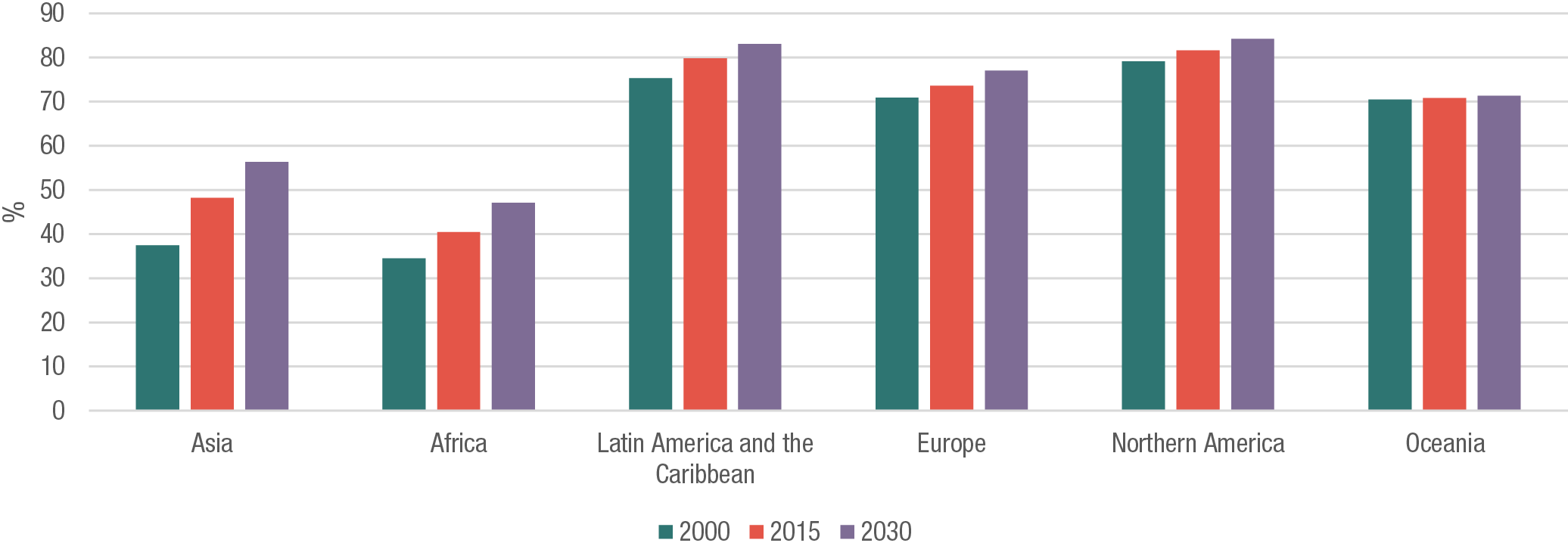There are 28 ‘mega-cities’ today, compared to just two in 1970. Another 13 mega-cities are expected to emerge by 2030. And it’s not just the biggest cities which are expanding – the fastest-growing urban areas are medium-sized cities, and cities in Asia and Africa which have populations of less than 1 million.
What this means for our global society has been ignored for a long time but finally, at Habitat III, ‘urbanisation’ has made it to the international stage.
Next week’s long-awaited conference will bring together member states and relevant stakeholders to discuss and agree a New Urban Agenda. With a Sustainable Development Goal (SDG) dedicated to sustainable cities, the New Urban Agenda promises to be an international agreement governing how to implement and localise a shared urban vision. It seems that the persistent and rapid urbanisation of countries across the world has pushed its way into the global policy arena at last.
And yet, city governments are not centre-stage. While they have contributed to the agenda, municipal governments are not leading the discussion, or making commitments at Habitat III.
This, sadly, is not a surprise. The decentralisation of political power and public money to cities is often half-hearted. City populations are growing and people are migrating to urban centres, drawn to the opportunities they offer. Yet, cities with quickly growing populations need services, infrastructure, housing and economies which can expand and include more and more people. This requires money and leadership – a fully empowered local government.
What will it take for national governments to make space for municipal governments? To enable them to manage local affairs effectively? To devolve political power, and let them have access to real local revenue sources?
When power to cities is granted, but taken away again
Some cities have shown what can happen when an empowered leader takes charge. The classic examples are from Latin America. Leaders such as the infamous Antanas Mockus, the former mayor of Bogota in Colombia, have brought radical changes to their cities: employing clowns to police city traffic, and introducing a voluntary tax, which 63,000 people chose to pay.
Beyond Latin America, cities such as Lagos in Nigeria have made progress in tax reform and waste removal under the bold direction of successive State Governors, Bola Tinubu, and then Babatunde Fashola.
What was special about these countries, states and cities which gave local leaders a stronger role in a city’s development?
In Lagos, political competition with the federal capital combined with a large and demanding middle-class may have been the key to motivate the State Governors to prove themselves. In Latin America, wider national political changes have often driven more localised and participatory decision-making, introducing elected mayors with real power.
But national government can pull away power as fast as it gives it. If national government begins to fear the growing political strength of municipal governments, their autonomy and resources may quickly be closed down. This is the experience of Dakar’s aborted municipal bond.
What does the New Urban Agenda have to say?
Of course, draft outcome document has phrases like ‘effective local and metropolitan multi-level governance’, ‘local governments determining their own administrative and management structures’, and ‘sound and transparent systems of financial transfers’.
We’ll be looking to the national governments attending Habitat III to show real commitment and consensus on these.
These are the questions that we need Habitat III to answer: what can we learn from countries with strong cities? What can persuade national governments to empower city governments so that they can lead, invest in and develop the growing urban centres of the future?

